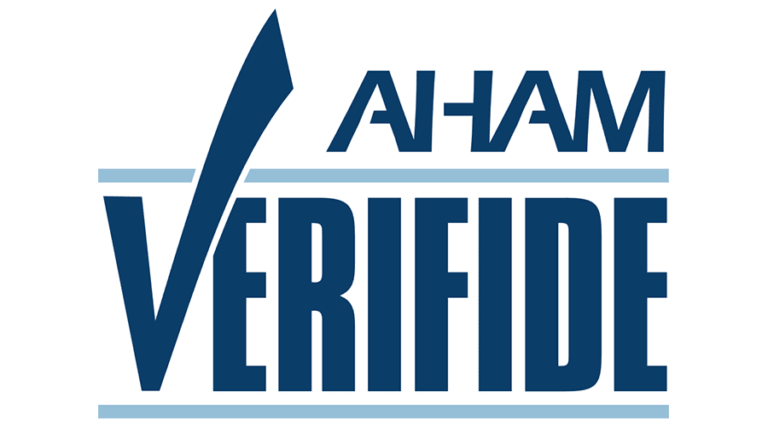If you’re ready to purchase a portable air purifier for an area of your home, it’s important to consider room size. This means you must not only know how to calculate square footage for an air purifier, but also learn some of the terms manufacturers use in their product information. Here’s a guide to help you choose the right air purifier for your room size.
What Size Air Purifier do I Need?
Start by deciding where you need an air purifier
most. It’s best to place a purifier as close to the source of the
 contaminant as possible, so if you have a smoker, placing the purifier in the smoker’s room
is a good idea. You might also consider placing it where your pets often stay if you’re trying to clean the air of pet dander.
contaminant as possible, so if you have a smoker, placing the purifier in the smoker’s room
is a good idea. You might also consider placing it where your pets often stay if you’re trying to clean the air of pet dander.
Once you’ve decided on the room or rooms where you’ll use your purifier, measure the length and width of the room across the floor. Then multiply the two numbers to get the square footage. For example, a 10-foot by 8-foot room is 80 square feet. You might also measure two rooms together. For example, if you have a living room with a dining area, measure the square footage of each room and then add up the two numbers to get the area you need to cover. A 200-square-foot dining room plus a 100-square-foot dining area would result in 300 square feet you need to cover with your air purifier.
In general terms, an air purifier for a small room, like a small bathroom, bedroom or office, should be able to cover about 200 square feet of space. This can be a small desktop model. For a medium-sized room, like a small basement, den or studio, go with a mid-range air purifier that can cover 201 to 399 square feet of space. For a large room, like a master bedroom or living room, opt for a purifier that can cover 400 square feet or more.
The Skye Air Purifier covers 1,600 square feet, so it’s a great large area air purifier. It can cover large spaces or be placed between rooms to cover a large area. It’s also highly efficient, so it’s a good choice for smaller rooms as well. Sometimes you are trying to cover a larger amount of space, so you may need additional units. Use the portable air purifier calculator to determine what you need.
You might also consider an in-duct air purifier, which goes a long way toward ensuring your home is fresh and clean, and also helps your heating and cooling systems run more efficiently, meaning lower energy bills in the long run.
Below we walk through the terminology used to determine how well a portable air purifier works along with how to make an informed comparison of portable air purifiers.
What is the Clean Air Delivery Rate?
It’s not just square footage you need to
consider, but the Clean Air Delivery Rate, or CADR. The Association of Home
 Appliance Manufacturers (AHAM) developed this measure to help consumers understand how much air is filtered for three common air pollutants — smoke,
pollen and dust. It’s measured in cubic feet per minute, or CFM, and the higher the number, the faster the purifier filters air. This number is recognized by the U.S. Environmental Protection Agency and the American Lung Association.
Appliance Manufacturers (AHAM) developed this measure to help consumers understand how much air is filtered for three common air pollutants — smoke,
pollen and dust. It’s measured in cubic feet per minute, or CFM, and the higher the number, the faster the purifier filters air. This number is recognized by the U.S. Environmental Protection Agency and the American Lung Association.
AHAM Verified CADR ratings are independently determined and typically indicated online and printed on the air cleaner’s box or manual. You can find more information on the AHAM website.
What’s the Minimum CADR Needed for My Room or Area?
To determine the minimum CADR needed, you’ll need the square footage of the room of the area you’re trying to purify (assuming 8ft ceilings). AHAM’s guidelines state that the CADR be at least two-thirds of the room size. Therefore, to filter the air in a 200-square-foot area of your home, you’ll need an air purifier with a CADR of at least 133 CFM, as 200 times 2/3 equals 133.
Some air purifiers only show CFM, or the cubic feet per minute of airflow, which will be higher than the CADR. For example, a unit with a 293 CADR would have a CFM of about 430. To determine required CFM, take the square footage of the room, divided by 30. So, an air purifier with a 430 CFM would cover roughly 1600 square feet.
AHAM is an independent testing and certification body for consumers to compare the verified performance of air purifiers. When selecting an air purifier, make sure it’s AHAM verified.
Determining Square Foot Coverage Based on CADR
If you’re looking at an air purifier and want to determine about how many square feet it can cover based on its CADR, you’ll need to multiply the CADR by 1.55. If an air purifier has a CADR of 300 CFM, it can cover up to 465 feet.
Ceiling height does have some bearing on this number, but the calculations can get complicated. Just know that if you have cathedral ceilings, you might need a slightly higher CADR to efficiently purifier the air in your home.
AHAM CADR Reliability
AHAM verified CADR is independently tested and certified by a third-party, however, is not a perfect evaluation of an air purifier. For one, CADR does not measure performance over time, which can go down with cheaper air purifiers. Secondly, it only provides performance at the purifiers highest fan speed, which most people do not put the units on.
Finally, CADR currently only provides information on an air purifiers effectiveness with particles, like smoke, dust, and pollen. It does not provide a purifiers effeteness against odors, chemicals, or germs. Carbon filters and PCO technology can reduce odors and chemicals and ultraviolet light can reduce germs, but these are not included in the CADR number at the moment.
Manufacturer’s Suggested Room Size
You might be wondering why you need to bother with CADR when the air purifier’s manufacturer provides a suggested square footage. Use this as a general guideline, but keep in mind that manufacturers can boost their numbers by testing them in unrealistic environments, like empty rooms or rooms with low ceilings. Some might even provide the airflow in cubic meters per hour (which would be higher than CADR or CFM), or this number in cubic feet rather than square feet, which makes a difference, so make sure you read the claims carefully.
Can an Air Purifier Be Too Big?
The answer is that it depends on what you want and need. Large capacity air purifiers do tend to be bigger and therefore you may not want that for your small room. Plus, larger air purifiers may also use more energy, depending on whether the air purifier has a speed control or not. If you get a larger air purifier with a speed control for a smaller room, you have the ability to set the unit at a lower speed to avoid using excess energy but also have the option to increase the fan speed, if necessary. It’s always better to go with a bigger air purifier than a smaller one. It will be more efficient and more versatile, providing you the opportunity to use the unit in different locations and at different fan speeds.
 US Dollars
US Dollars
